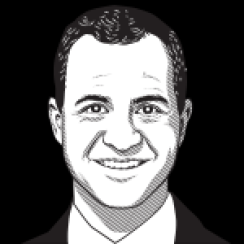Howard Marks offers entertaining and insightful advice when asked by young professionals how to build a great investment firm. The Oaktree Capital Management founder’s response: “Start the business 40 years ago.”
Private equity has ridden the waves of economic prosperity and declining interest rates for the past few decades. I had an opportunity to interview eight leaders in the field for a miniseries on the Capital Allocators podcast, and I found more differences than similarities in their strategies, organizational structures, cultures, and ownership. Yet all eight have steered their ships to great success.
Let’s start with strategy. The approaches the masters take to leveraged buyouts are all over the map. John Connaughton of Bain Capital discussed buying suboptimal businesses across industries and focusing on operational improvements, whereas Thoma Bravo’s Orlando Bravo extolled the virtues of growing the top line in enterprise software and technology companies. David Rubenstein’s Carlyle Group invests globally across sectors, and Doug Ostrover’s Blue Owl Capital lends broadly to sponsor-backed deals. Others invest exclusively in one sector: Chuck Davis at Stone Point Capital (financials), Paul Salem at Providence Equity Partners (media), and Robert F. Smith at Vista Equity Partners (enterprise software).
The differences in strategy also apply to engagement with management teams at portfolio companies. Thoma Bravo and Stone Point like to back existing management teams. Blue Owl and John Toomey’s HarbourVest Partners effectively do the same, supporting the established management of private equity firms. The other half of the lot — Bain Capital, Carlyle, Vista, and Virginie Morgon’s Eurazeo — have playbooks in place to operate companies and are more willing to enhance or change management by leveraging their rosters of operating partners.
These distinctions filter down to organizational structure and culture, where again no single model appears better than another. Morgon and Rubenstein describe how their firms started in one region and built global capabilities, predominantly by hiring external talent to oversee new endeavors. In contrast, HarbourVest and Bain Capital expanded into different areas as a way for up-and-coming employees to take on senior leadership roles. And it’s not just something in the water in Boston leading them to that model: The same holds true for Stone Point and Thoma Bravo, where subsectors within their specialties became avenues for the growth of internal talent.
The softer side of culture came through in these conversations as well. Ostrover reflected on building a kinder, gentler organization. His vision sounded just like that of Salem, who described Providence Equity’s being the “nice guys” in the industry as a competitive advantage. Perhaps eschewing that possibility, Morgon, Rubenstein, and Thomas each emphasized the intensity of the work required as a key component in their success.
Last, the ownership structure of private equity firms is also heterogenous. The eight leaders I spoke with oversee organizations that are owned privately (Bain Capital, HarbourVest, and Thoma Bravo), are traded publicly (Carlyle Group and Eurazeo), recently went public through a special purpose acquisition company (Blue Owl), are partially minority owned through a private equity fund (Blue Owl, Providence Equity, and Vista), or are partially owned with a quiet partner (Stone Point). The different structures inevitably come with astute explanations as to why each master chose that path, more often than not stemming from varying views of ownership and transition.
But the external extension of these ownership models is an indication that the industry is evolving. Each founder has achieved multigenerational financial success and has deeply considered succession plans. The touchy subject of transference of equity is handled quite differently depending on the beliefs of the leaders and the cultures of the organizations they have built. Some no doubt will be more successful than others.
Investment strategies also evolve, while still staying true to the legacy of each firm’s original approach. Bain Capital’s operational focus, with its roots in Bain Consulting, has now been extended from private equity to all alternative-asset classes. Thoma Bravo remains concentrated in technology and enterprise software, but changes in the industry have led it to shift from seeking stable cash cows to choosing growth-oriented companies. HarbourVest started as a private equity fund of funds and today has as much money in coinvestments and secondaries as it does in primary partnership investments.
What is apparent from my conversations is the depth of insight and experience these private equity leaders bring to their craft. Across the board, they are deep thinkers about investing, knowledgeable about businesses, charismatic in expression, and passionate about their craft. The variety of models in the industry and macroeconomic tailwinds might give the appearance that a rising tide lifted all boats independent of the skill of the captains, but listening to these success stories left me with the impression that they are all expert sailors navigating crashing waves.







